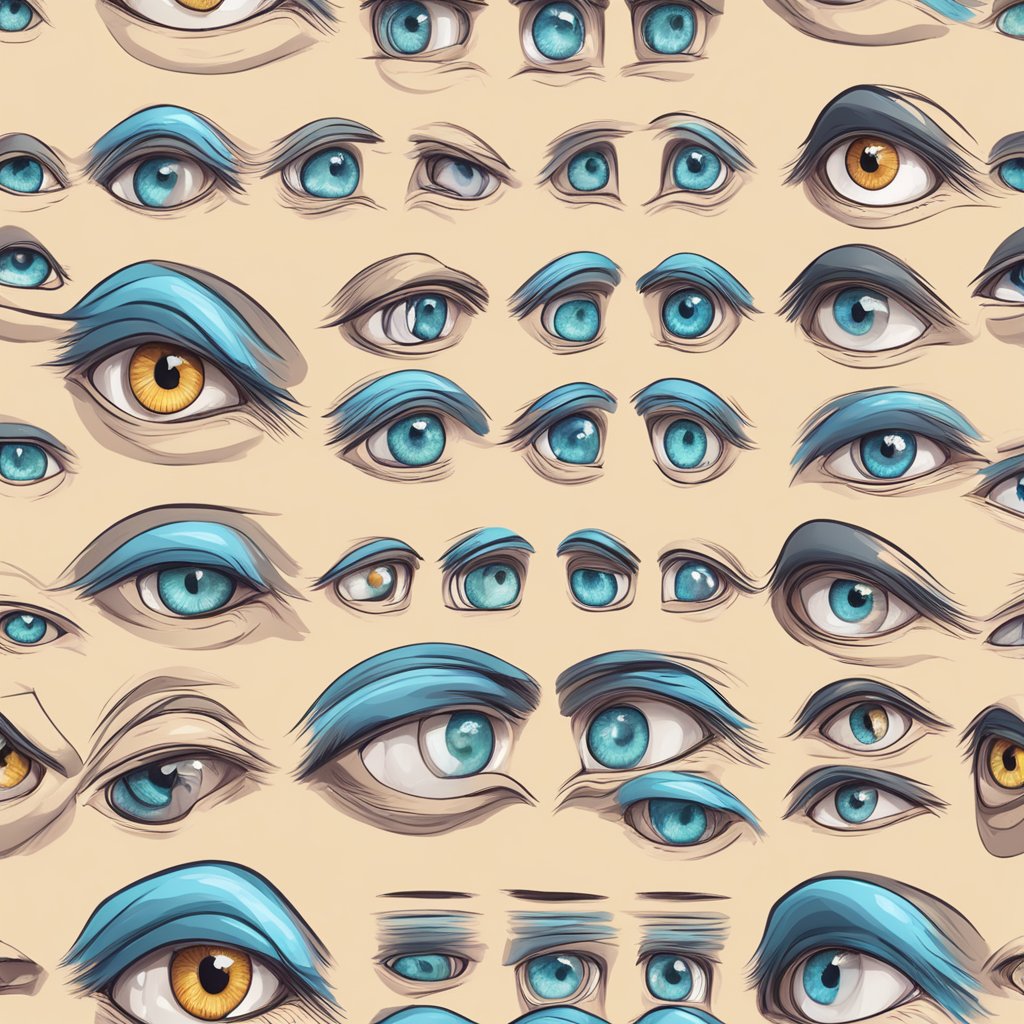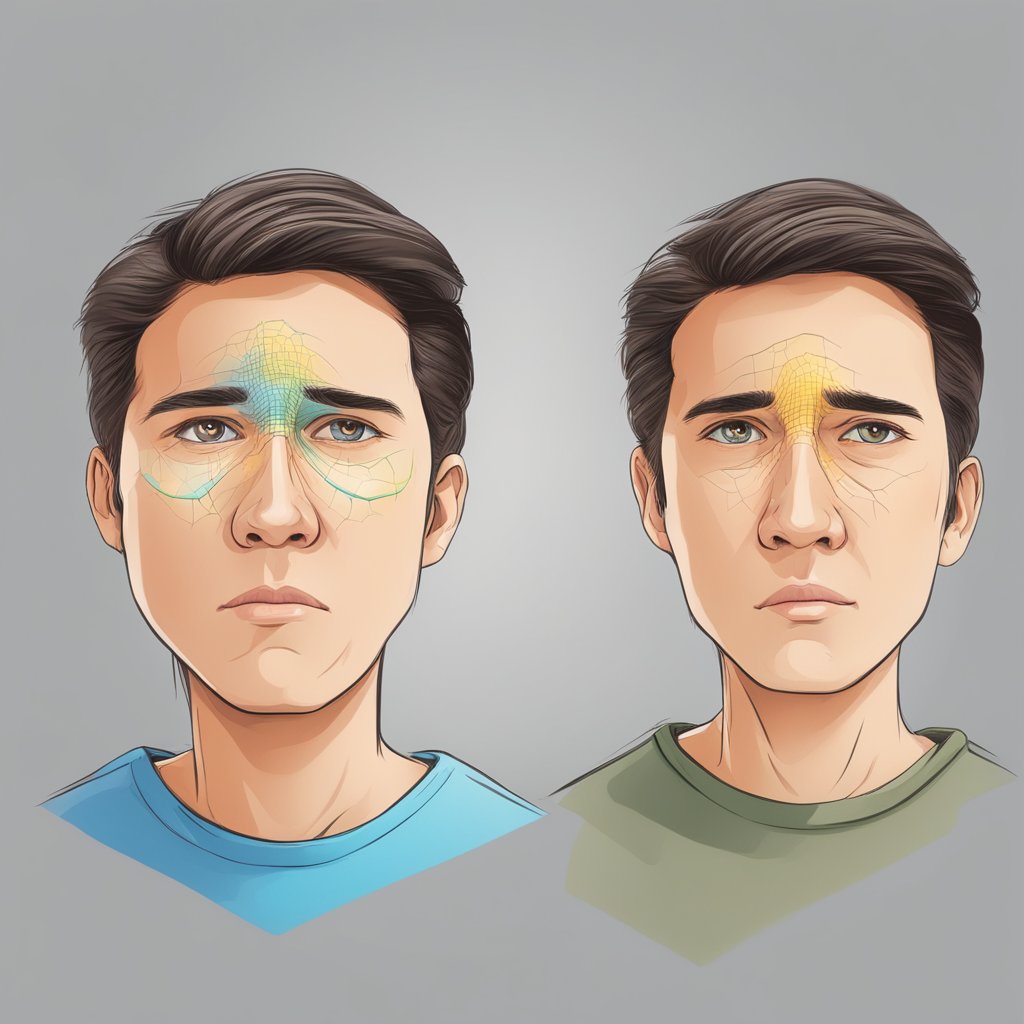Experiencing pain when moving the eyes can be disconcerting and uncomfortable. This particular type of eye pain may be indicative of an underlying issue that requires attention. Whether it’s a sharp, sudden discomfort or a persistent aching, the sensation can significantly impact daily activities such as reading, working on a computer, or even simply navigating surroundings.

Understanding the potential causes of this symptom is the first step in addressing the problem. Eye pain when moving the eyes can be caused by various conditions, some benign and easily treatable, like dry eye syndrome or eye strain, while others might be indicative of more serious conditions like optic neuritis or glaucoma. Recognizing accompanying symptoms such as redness, blurred vision, or sensitivity to light is crucial for an accurate diagnosis.
For those experiencing such discomfort, seeking medical advice is essential. A healthcare professional can provide a proper diagnosis and tailored treatment plan, which may include rest, medication, or in some cases, more specialized interventions. Regular eye check-ups and practicing good eye hygiene can help prevent the occurrence of eye pain and maintain overall ocular health.
Key Takeaways
- Eye pain when moving the eyes can be caused by a range of conditions from dry eye to more serious diseases.
- Discerning additional symptoms is important for diagnosis and subsequent treatment strategies.
- Professional medical evaluation is vital to determine the cause of eye pain and guide appropriate treatment.
Common Causes of Eye Pain

Eye pain when moving the eyes can be attributed to various issues, ranging from infections and inflammation to physical trauma and refractive errors. Understanding these causes is key to addressing the discomfort effectively.
Infections and Inflammation
Infections such as conjunctivitis, also known as pink eye, can cause significant pain and discomfort. This condition occurs when the conjunctiva, the transparent membrane covering the white part of the eye, becomes inflamed. Symptoms typically include:
- Redness in the white of the eye
- Increased tearing
- A burning or gritty feeling
Inflammation can also result from allergies, which often cause itchy, red, and watery eyes. These allergic reactions can similarly lead to discomfort when moving the eyes.
Trauma and Injury
A corneal abrasion, which is a scratch on the surface of the eye, can lead to severe pain, especially when looking around. When dealing with trauma or injury, the following signs might be present:
- Pain when opening or closing the eye
- Sensitivity to light
- The feeling of having something in the eye
Any significant injury to the eye warrants immediate medical attention to prevent further complications.
Refractive Errors
Refractive errors, such as myopia (nearsightedness), hyperopia (farsightedness), and astigmatism, may not directly cause pain when moving the eyes, but they can lead to eye strain. Over time, this strain could cause discomfort when trying to focus the eyes, particularly during extensive periods of reading or screen use. Symptoms include:
- Headaches
- Blurred vision
- Sore or uncomfortable eyes
Regular eye examinations are crucial for diagnosing and correcting refractive errors with proper eyewear or contact lenses, reducing the risk of eye pain.
Related Medical Conditions
In my study of ophthalmology, I’ve come to recognize that pain when moving the eyes can be indicative of certain medical conditions. These conditions range from neurological disorders to systemic diseases, each with distinct characteristics that can affect ocular motility and comfort.
Neurological Disorders
-
Multiple Sclerosis (MS):
Multiple sclerosis is a well-known central nervous system disorder that affects the brain and spinal cord. MS can lead to optic neuritis, an inflammation of the optic nerve, which may result in pain when moving the eyes. -
Optic Neuritis:
Independent of multiple sclerosis, optic neuritis stands as a condition where the optic nerve becomes inflamed, causing painful eye movements and, potentially, temporary vision loss.
Autoimmune and Systemic Diseases
-
Uveitis:
This refers to inflammation of the uvea, the middle layer of the eye. Uveitis is often associated with systemic autoimmune conditions and can lead to eye pain, especially with movement. -
Sclerosis-related Eye Problems:
Apart from MS, other types of sclerosis can also affect the eyes, although in different ways that might also cause discomfort and pain with ocular movement.
Thyroid-Related Eye Disorders
-
Glaucoma:
Although primarily a condition of increased intraocular pressure, glaucoma can produce pain with eye movement in advanced stages due to the pressure exerted on ocular structures. -
Hyperthyroidism (Graves’ Disease):
Hyperthyroidism, particularly Graves’ disease, can lead to eye disorders such as Graves’ ophthalmopathy. This condition might cause eye pain when moving the eyes due to inflammation and swelling in the muscles and tissues around the eyes.
Symptoms and Diagnosis
I’ll guide you through how to determine if the pain in your eyes is a cause for concern and when it’s time to seek professional medical advice.
Identifying the Source of Pain
When I move my eyes and they hurt, I note the accompanying symptoms. The pain might be dull, sharp, or feel like pressure. If redness occurs, it could indicate inflammation. Sensitivity to light might suggest a possible corneal issue. It’s important to assess whether the pain comes with a headache or vision loss, as these may be signs of serious conditions like glaucoma or optic neuritis.
| Pain Location | Related Symptoms | Possible Conditions |
|---|---|---|
| Behind the eye | Headache, pressure | Sinus infection, migraine |
| Surface of the eye | Redness, tearing | Conjunctivitis, corneal abrasion |
| Entire eye | Vision loss, nausea | Glaucoma, Uveitis |
When to Visit a Doctor
I reach out to an eye doctor or ophthalmologist if the pain persists, worsens or is accompanied by other worrying symptoms. Loss of vision or severe headache alongside eye pain should prompt immediate medical attention. Persistent discomfort or pressure could also warrant a professional assessment, as early diagnosis often leads to more effective treatment.
-
Immediate Doctor Visit Recommended If:
- I experience abrupt loss of vision.
- I suffer a severe headache with eye pain.
- I notice persistent redness and eye pain.
-
Routine Check-Up Needed If:
- I feel mild, intermittent eye pain.
- I experience discomfort when moving my eyes regularly.
- There’s a slight increase in sensitivity to light over time.
Treatment and Prevention
When my eyes hurt as I move them, I consider various treatment options ranging from medications to home remedies. I may seek professional advice to choose the best course of action, and prevention focuses on addressing the root cause to avoid further discomfort.
Medications and Therapies
For infection-related eye pain, I typically use antibiotics prescribed by a healthcare professional. These can come in the form of eye drops or oral medications. If the pain is due to dryness, artificial tears can provide relief:
- Antibiotic eye drops/tablets: Fights bacterial infections.
- Artificial tears: Alleviates discomfort from dry eyes.
Inflammatory conditions might require steroids or other anti-inflammatory medications that I only use under the guidance of an ophthalmologist.
Self-Care and Home Remedies
I adhere to several self-care measures to manage the pain. Rest is crucial; giving my eyes a break from screens and reading can help reduce strain. For immediate relief, I might use warm compresses, which I apply gently on closed eyelids:
- Rest: Reduce eye strain by taking frequent screen breaks.
- Warm compresses: Application duration of 5-10 minutes can soothe pain.
I always ensure that I’m in a well-lit environment to prevent straining my eyes further.
Surgical Interventions
In cases where structural eye problems are causing pain, especially when moving my eyes, surgery may be considered a potential treatment. I understand that surgical options will be based on a thorough examination by an eye specialist and can include:
- Procedures to correct double vision or unaligned eyes.
- Surgeries for more severe conditions, such as glaucoma or cataracts.
This type of intervention is typically the last resort when other treatments have failed or the condition is severe.
Frequently Asked Questions
In this section, I address common concerns and provide explanations for various causes of eye pain associated with eye movements.
What causes eye pain accompanied by headaches when moving the eyes?
My experience tells me that the combination of eye pain and headaches when moving the eyes is often attributed to strain or inflammation of the muscles and nerves around the eyes. This condition may also be related to migraines or sinus infections.
Could looking around or moving my eyes from side to side cause discomfort or pain?
Yes, discomfort or pain while moving the eyes side to side could indicate eye strain, especially after prolonged screen time or reading. It could also suggest underlying issues with the eye muscles or nerves.
Is it normal to experience eye pain when I’m sick or could this indicate a more serious issue?
While it is common for my eyes to hurt when I have a cold or flu due to inflammation and congestion of the sinuses, which can put pressure on my eye sockets, persistent or severe pain may point to a more serious condition that might require medical attention.
Are eye movement pain and headaches potential symptoms of COVID-19?
Eye pain and headaches have been reported by some as symptoms of COVID-19. However, these symptoms alone do not confirm the presence of the virus. I know it is essential to monitor for other signs of COVID-19 and consult a healthcare provider for accurate diagnosis.
What could be the reason my eyes hurt when I look upwards or in a specific direction?
When my eyes hurt as I look upwards or in a specific direction, it could be due to strain on the muscles that control eye movement or inflammation of the optic nerve. Continued pain may warrant a visit to an eye care professional.
When is eye pain during movement considered serious enough to seek medical attention?
I consider eye pain serious if it is severe, persists for a prolonged period, is accompanied by visual changes or other symptoms like nausea, or if I sustained an injury to the eye. In such cases, it’s crucial to seek immediate medical attention.